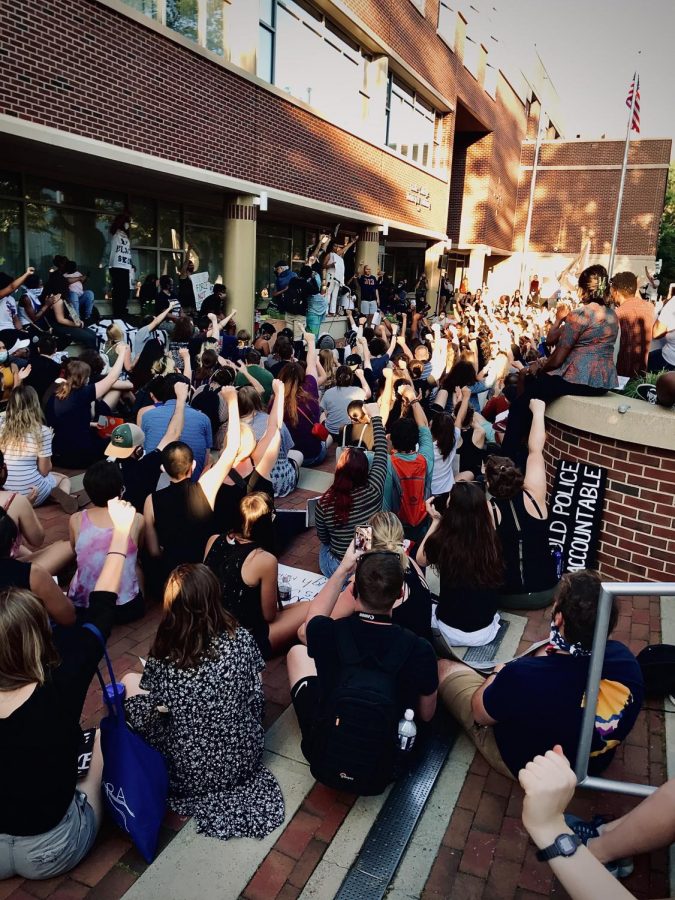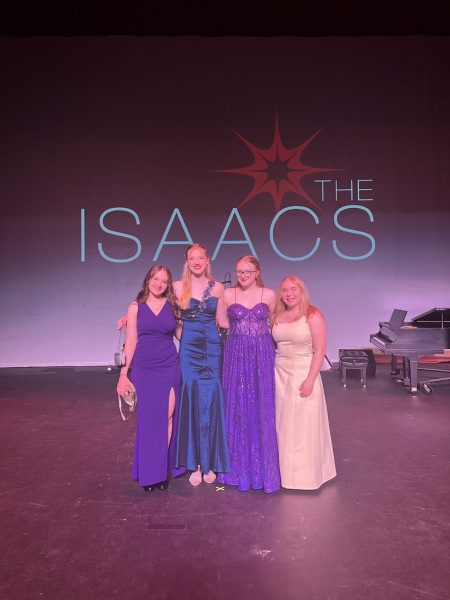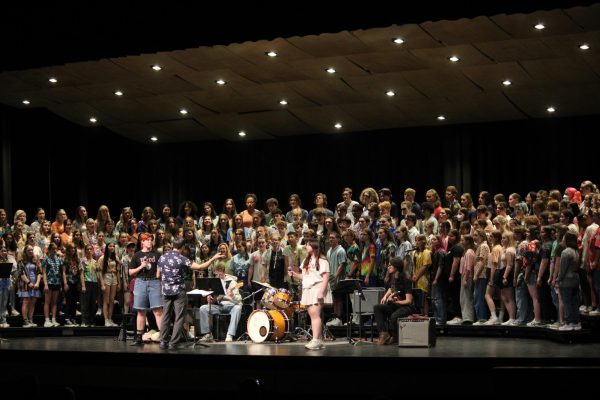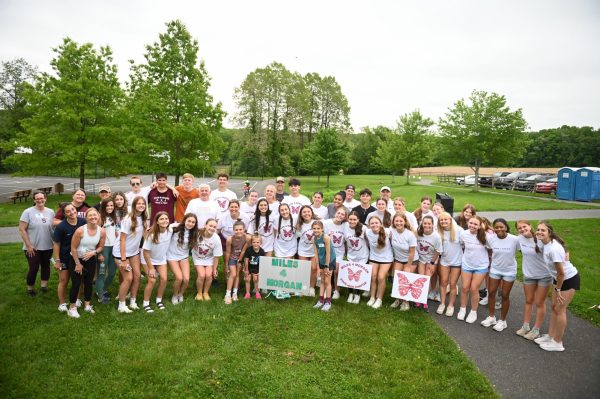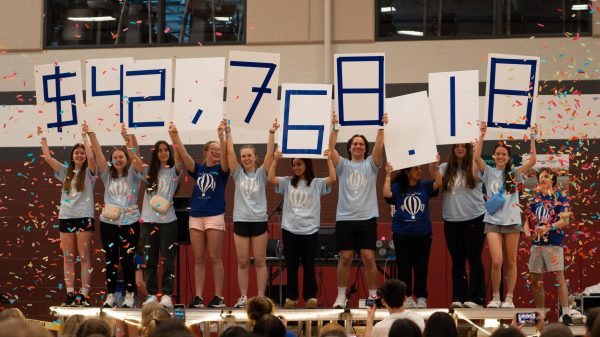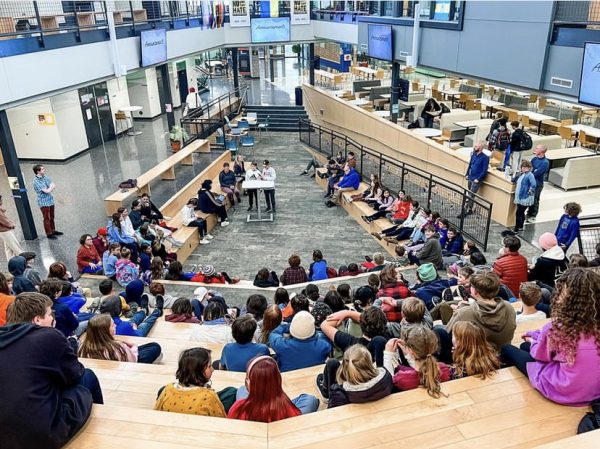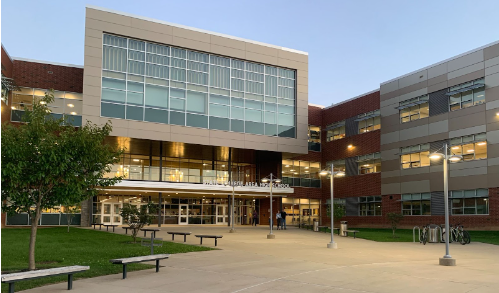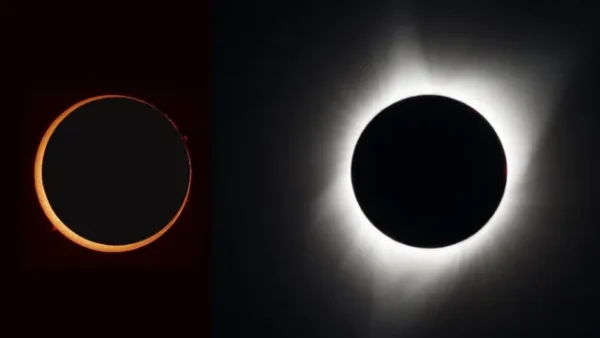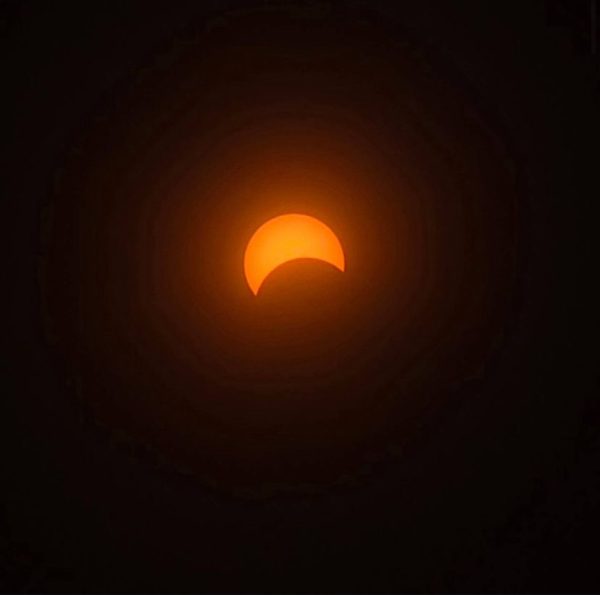The 2020 March on Washington Makes Its Way To State High
State High Students protesting racial justice on June 6, 2020, in State College PA. Students are gathered at the municipal building, where they are listening to speakers protesting the police system.
September 14, 2020
The 2020 March on Washington took place on Friday, Aug. 28, 2020, the 57th anniversary of Martin Luther King Jr.’s famous “I Have a Dream” speech. The “Get Your Knee Off Our Necks” protest began at the Lincoln Memorial at 7 a.m., where thousands of protesters marched to fight for racial justice. Relatives of George Floyd, Ahmaud Arbery, Jacob Blake, Martin Luther King Jr., and Breonna Taylor took the stage to speak out against police brutality and social injustice with thousands of attendees watching.
State High freshman Saylor Milhomme said that she and a lot of people around her saw coverage of the 2020 March on Washington and have learned a lot about the movement from the coverage. “When there is a big coverage of a march, then a lot of people from all around the world listen to what those speakers have to say,” Milhomme said.
Many news stations including CNN, NBS, and CBS covered this event, spreading awareness to towns such as State College. “With big news station coverage, a lot of people now know about this march and the intentions around it,” freshman Maya Cienfuegos said.
Both Cienfuegos and Violet Doyle-an active ally and supporter of the Black Lives Matter(BLM) movement-agree that social media, news stations, and radio coverage have played a big role in this movement’s momentum, specifically here at State High.
“I think that social media and the internet have done a good job of educating students at State High, but I think that a lot of teens consider it to be a trend, not a movement. A lot of people posted about the Black Lives Matter movement not because they care, but because they don’t want to be seen as a bad person. The minute people stopped posting about the movement, then they stopped, leading to a less intense approach of the movement,” Doyle said.
Cienfuegos added to that, stating, “People should keep protesting and posting about racial injustice forever instead of just a few weeks, because a person’s death is not a trend.” Cienfuegos said that people should always educate themselves and learn about marches.
Although Washington D.C is more than three hours away from State College, Cienfuegos said the recent march on Washington has really helped her and the Black community. “The protests definitely have made a lot more people aware of what’s going on and have inspired people to post and write about the murders,” Cienfuegos said.
Cienfuegos said that the recent protests have helped to reassure her that people care about her community- especially State College. “The protests that have taken place in State College in the spring have helped me to respect State College and the people in it for fighting for racial justice,” Cienfuegos said.
When asked about the recent march on Washington and the one 57 years ago, Doyle said that she saw a lot of similarities between the two. “Although some things are different, a lot of things are still the same. There is still a negative response to these protests and they are still fighting for racial equality.”
Erica Carrington, a protester at Washington and longtime advocate for the BLM movement shared with the New York Times how proud she was to see the next generation fighting for racial change, but also how sad it is that they still have to fight, saying, “When I was her[daughter Antoinette] age, I participated in a march for fair and equal housing. To see us so many decades later still marching — it’s celebratory yet disheartening, to say the least.”
Attendees at the protest had to take proper health precautions due to COVID-19, including wearing masks, temperature checks, and, in some states, quarantine up to 2 weeks after the event. Hand sanitizer stations were also provided throughout the march so protesters could stay clean. Even with COVID, thousands attended, proving the march to be a success.
State High students continue to fight for racial equality by spreading news on social media and holding virtual protests like the recent one on Sept. 13. “I’m just proud that State High students are making a difference by being part of the Black Lives Matter movement,” Cienfuegos said. “It is really powerful to see a community come together and fight for what they believe in.”

